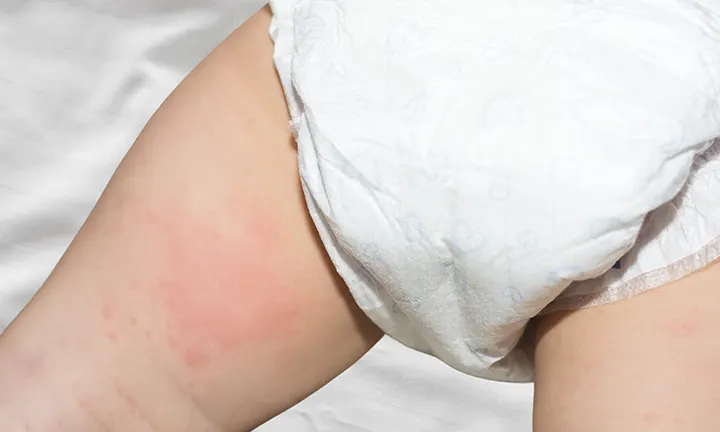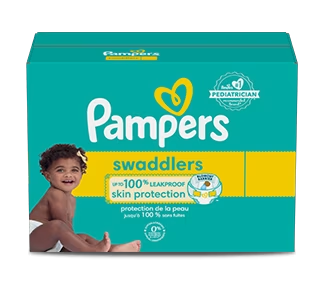Diaper Rash Bleeding
Diaper rash is a common issue for many parents, but seeing your baby's diaper rash bleed can be a bit of a shock. While it may look concerning, understanding what's happening and knowing how to manage it can help you take care of your baby's delicate skin. In this article, we'll delve into the causes, treatment options, and when it's crucial to consult your baby’s healthcare provider.
Can a Diaper Rash Cause Bleeding?
A diaper rash is a frequent skin irritation that affects babies, typically showing up as red or darker (depending on the skin tone) patches of skin in the diaper area that are usually inflamed. Causes include prolonged dampness, friction from diapers, or reactions to certain skin products.
If left untreated or if it becomes severe, diaper rash that is bleeding can occur. This happens when the irritated and inflamed skin breaks down, resulting in tiny cuts or sores that might bleed. The constant friction from diapers, along with exposure to urine and stool, can worsen the situation, making it more painful for your child.
It's crucial to tackle diaper rash early to prevent it from escalating to bleeding. Keeping the area clean and dry, changing diapers often, and using a barrier cream are key steps in managing and preventing diaper rash with bleeding.
Tip Maintaining cleanliness and dryness, frequent diaper changes, and applying a barrier cream are vital steps to manage and prevent any diaper rash bleeding. |
Causes of Bleeding Diaper Rash
Bleeding diaper rash arises from various factors, often linked to prolonged irritation or infection. Here are some typical causes:
Extended exposure to moisture. Keeping a baby's skin in contact with urine or stool for too long can lead to severe irritation and skin breakdown, eventually causing bleeding. This is especially common if diaper changes are infrequent.
Yeast or bacterial infection. A diaper rash can sometimes be complicated by a yeast or bacterial infection, worsening the condition. An infected diaper rash may appear red, swollen, and painful, potentially leading to bleeding.
Allergic reactions. Some babies have sensitive skin that reacts to certain diaper materials, wipes, or creams, leading to a severe rash that might eventually bleed.
Understanding these causes can help in preventing and managing diaper rash before it becomes severe enough to bleed.
How to Treat a Bleeding Diaper Rash
If you notice a diaper rash that is bleeding on your baby, it's crucial to act quickly by contacting your baby’s healthcare provider. Bleeding might indicate a severe rash or infection that needs professional attention. Meanwhile, you can take these steps to soothe your baby's skin:
Change diapers often. Keep your baby's skin dry and clean by changing their diaper frequently. This reduces moisture exposure, which can worsen the rash and bleeding. Check out our article on how often to change your baby’s diaper.
Clean the area gently. Use warm water and a soft cloth to carefully clean your baby's bottom during diaper changes.
Let the skin breathe. Whenever possible, allow your baby to go without a diaper for short periods to let air circulate around the affected area. This can help speed up healing.
Ensure a proper fit. Your baby should wear the right diaper size for comfort and airflow. Use our diaper size and weight chart guide to find the right fit. Choosing Pampers can offer the softness and protection your little one needs to avoid further irritation and discomfort. Pampers are designed to keep your baby dry and comfortable, which is especially important for sensitive skin.
Remember, consulting your baby’s healthcare provider for further advice and treatment is essential.
Diaper Rash Bleeding Remedies
While home remedies for diaper rash can be effective for mild cases, caution is advised when the rash has progressed to bleeding. When considering diaper rash bleeding remedies, it's best not to rely solely on home remedies. Instead, contact your baby’s healthcare provider to ensure proper treatment and avoid potential complications. It's always wise to err on the side of caution when it comes to your little one's health.
When to Contact a Healthcare Provider
If your baby’s diaper rash is bleeding, it's important to reach out to their healthcare provider promptly. Bleeding could be a sign of a severe rash or possible infection that requires professional medical assessment and treatment. It's not advisable to depend on home remedies alone when bleeding is present, as this might lead to complications.
Moreover, if the rash doesn’t improve within a few days, spreads beyond the diaper area, or is accompanied by other symptoms like fever or pus-filled sores, these are clear signals to seek medical advice immediately.
Your baby’s healthcare provider can assess the rash's severity and recommend the best course of action, which may include prescription treatments or other medical interventions to ensure your baby’s skin heals quickly and comfortably.
The Bottom Line
Ultimately, while diaper rash bleeding can be concerning, seeking guidance from your baby’s healthcare provider is key to ensuring proper treatment. Addressing the rash early and following medical advice can help prevent further complications and keep your baby comfortable.
For parents seeking extra support, the Pampers Club app offers discounts and digital deals to help you save on products essential for keeping your baby happy and healthy.
How We Wrote This Article The information in this article is based on expert advice found in trusted medical and government sources, such as the American Academy of Pediatrics and the American College of Obstetricians and Gynecologists. You can find a full list of sources used for this article below. The content on this page should not replace professional medical advice. Always consult medical professionals for full diagnosis and treatment.
Join Pampers Club and get:




